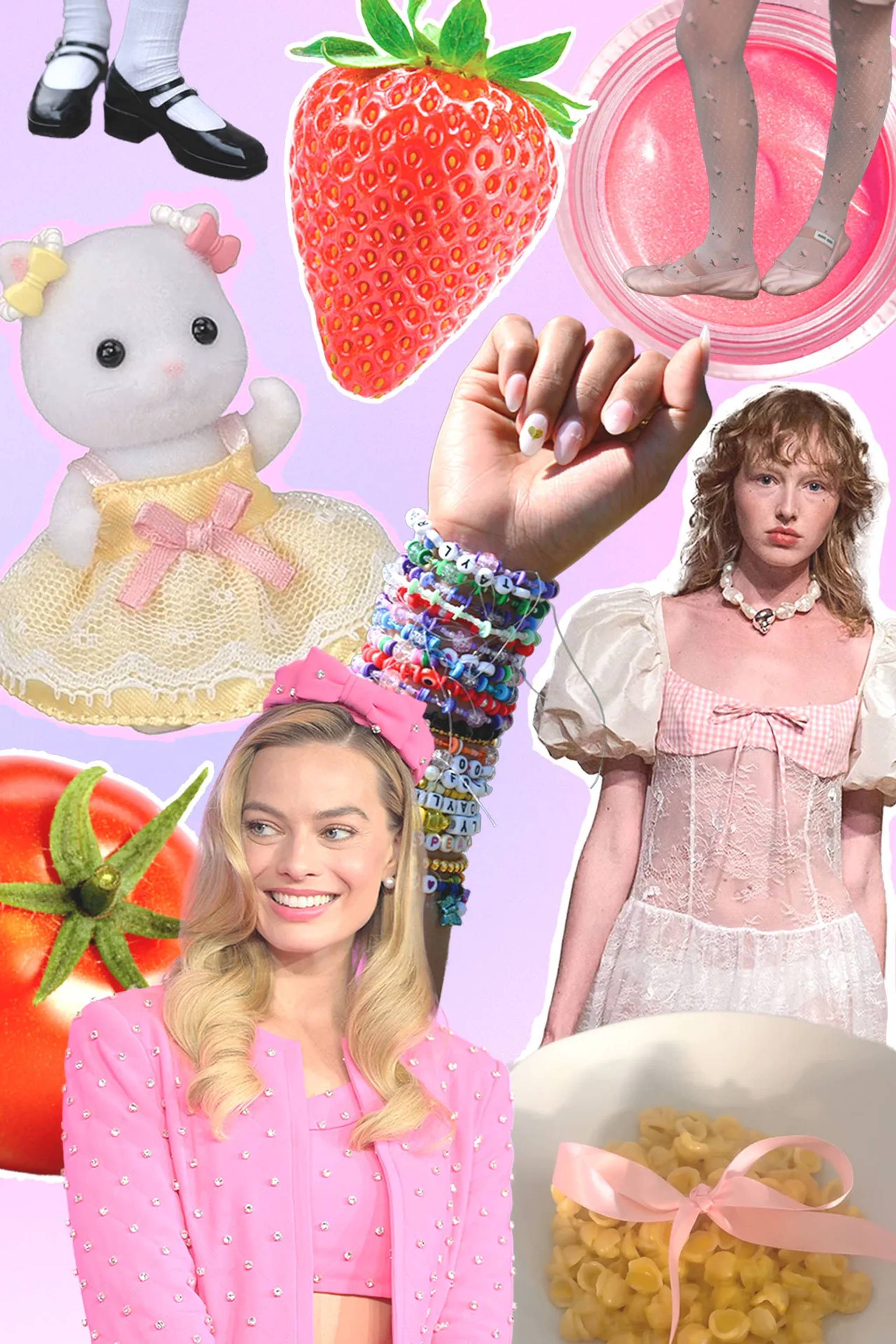
2023 saw a mountain of 'girl' trends flood the cultural landscape. From ‘girl math’ to tomato girl to ‘girl dinner’ and ‘lazy girl jobs’, the rise of the seemingly light-hearted nature of these trends points to something deeper. After all, there's more to being a girl than whatever’s trending.
2023 won the title of the year of the girl. 'Girl' trends ramped up on social media seen everywhere from clean girl to hot girl walks and soft girl, the list was never-ending.
Fashion and beauty saw an influx of classically soft, feminine girl touches. Think: pink bows and ballet pumps, glossy strawberry girl makeup and minimalist vanilla girl beauty.
And the girl takeover didn't escape the media and entertainment sphere.
Greta Gerwig’s cinematic success came in the form of one of summer 2023’s hottest movies: Barbie. Grossing $1.45 billion at the box office globally, the nostalgia-dripped celebration of girlhood created a much-craved moment of collective joy and a utopic escape from reality.
Gen Zers in particular have embraced this ‘girlification’ of their daily lives as a means of self-expression and liberation from restrictive social standards.
But however much we’re in the era of the girl, girl trends don’t come without their fair share of criticism.
Many of these trends affirm gender stereotypes and focus on narrow and exclusionary versions of femininity. Amid wider attacks on women’s rights and increased prejudice and violence against the LGBTQ+ community, are girl trends symbolic of shifting gendered outlooks?
Girl tropes and stereotypes
Barbie may have set the cultural tone last year and been a huge talking point for all things girl-related, but the stereotyping of women in ads has worsened and representation of women in films has hit a 10-year low.
While girl trends exude a certain carefree frivolity in a world that demands seriousness, they can also inadvertently perpetuate gender stereotypes and tropes.
Girl math, for example, has been critiqued as a patronising reaffirmation of women as frivolous spenders and men as their more sensible counterparts. The girl dinner trend has also prompted backlash and debate, running the risk of advocating disordered eating behaviours such as simply having a glass of ice cubes or not eating at all.
Girl trends also often cater to a singular definition of femininity. This can exclude women of colour from having access to these types of ‘soft’ femininity, and ignore the wide breadth of feminine experiences that exist.
The gender binary
Aside from encouraging stereotypes, girl trends also run the risk of reinforcing the gender binary itself.
2023 saw a widespread proliferation of attacks on transgender and non-binary individuals, both legally and socially. These assaults have damaging, real-world impacts on the LGBTQ+ community.
So is this moment of girlification a time for celebration and joy, or is it reinforcing traditional and outdated notions of gender?
In a society where there are only Barbie’s and Ken’s, or girls and boys, this leaves a lot of people feeling unseen and invalidated. As girl trends birth boy trends, they might also encourage a black-and-white way of thinking and looking at things that only caters to those at either end of gender the spectrum.
Girl, bye?
With all of this potential for deepened division in mind, what’s next?
Across the cultural landscape, icons such as Anne JKN are challenging norms surrounding gender and beauty, and media portrayals such as Bottoms are championing dark and queer femininity narratives.
Brands are even getting in on the act with Nike Japan encouraging girls to defy societal gender expectations.
2024 looks set to bring about a moment of change for girl trends. With potentially defining political moments on the horizon, and people tiring of larger-than-life, unrealistic and exclusionary narratives, it's making space for a more expansive version of girlhood where everyone is welcome.



